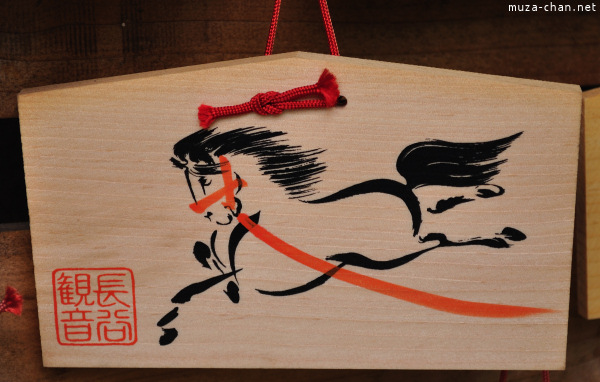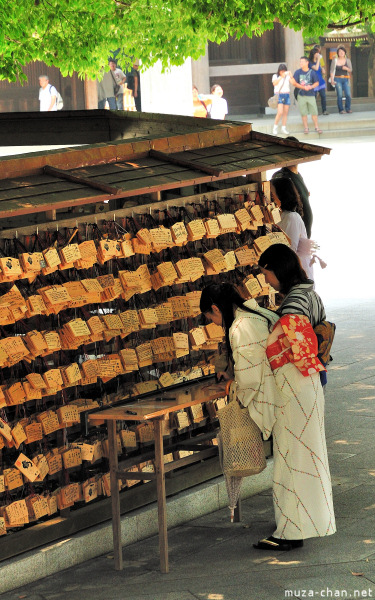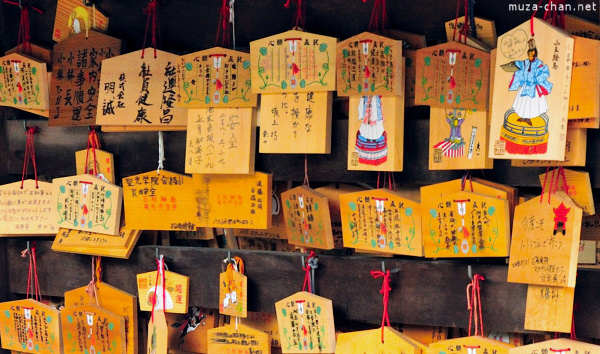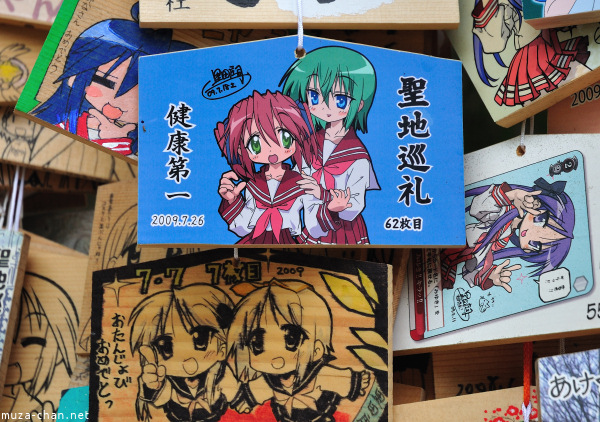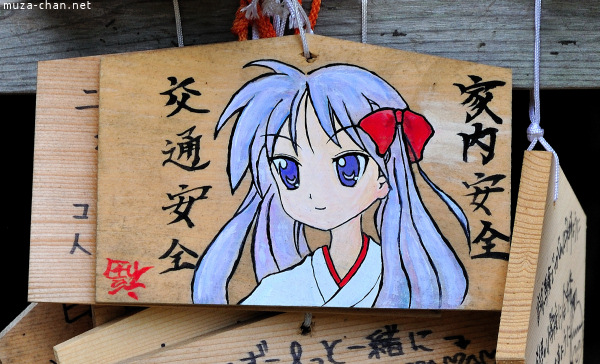In the old times in Japan, it was a custom for wealthy families to donate horses to shrines, as part of the invocations and a sign of respect for kami.
In time, this practice changed, first the donations became horse statues and finally changed into small wooden plaques featuring the painting of a horse, called ema.
On these plaques, the worshipers are writing their thanks, wishes and prayers, hanging them on special racks at the shrines, in order to be read by the kami.
In time, the paintings on ema diversified to various animals from Shinto mythology, Chinese zodiac, folklore (e.g. kitsune) or representations of kami:
Since the growth of the popular anime culture, many elements of Shinto practice and mythology appeared in the anime plots so, for me, it wasn’t very unexpected that several years ago, ema started to feature paintings of anime characters.
În vechime exista obiceiul ca familiile bogate să doneze cai altarelor shinto, ca semn de respect pentru kami şi pentru ca acesta să le îndeplinească dorinţele şi să-i ocrotească. În timp, caii au fost înlocuiţi cu statui în formă de cal şi apoi cu ema, mici plăcuţe din lemn pe care era desenat un cal.
Pe aceste plăcuţe, credincioşii îşi scriu dorinţele şi mulţumirile către kami şi apoi le agaţă la altar, pe un suport special, pentru a fi “citite” de kami.
Cu timpul, desenele de pe ema s-au diversificat, în afară de cai întâlnindu-se animale din mitologia shinto (de exemplu kitsune), animale din zodiacul chinezesc sau reprezentări ale unor kami:
Cum multe anime-uri conţin elemente de mitologie shinto sau întâmplări despre persoane care au legatură cu un altar shinto, nu m-a mirat foarte tare faptul că, de câţiva ani încoace, au început să apară primele ema cu personaje anime.
Read more
